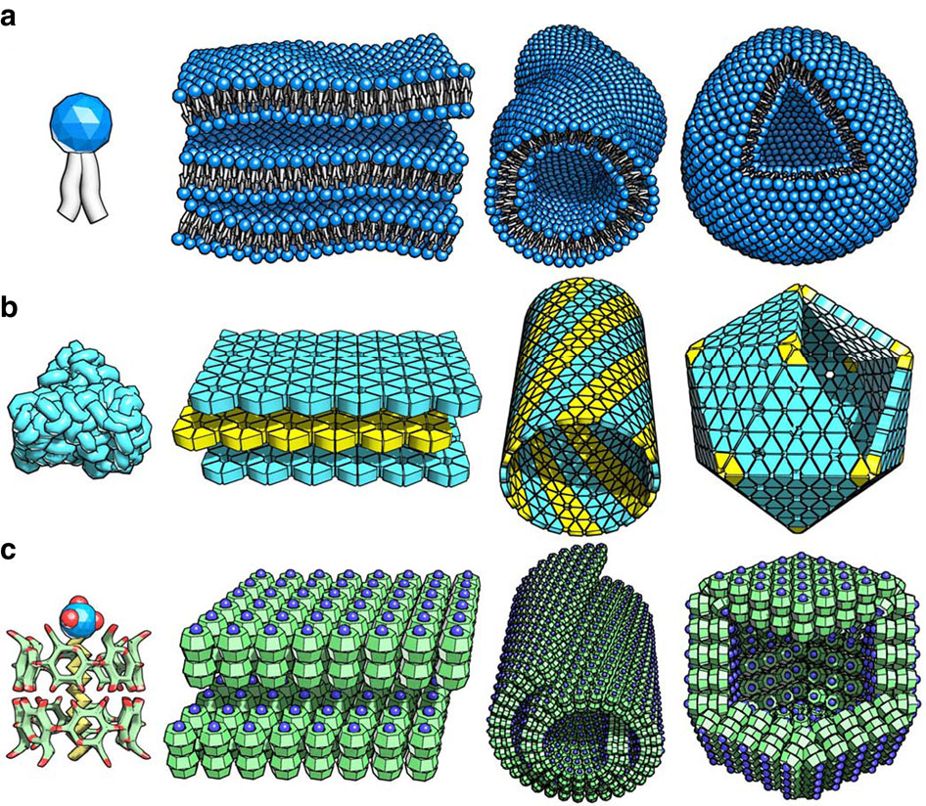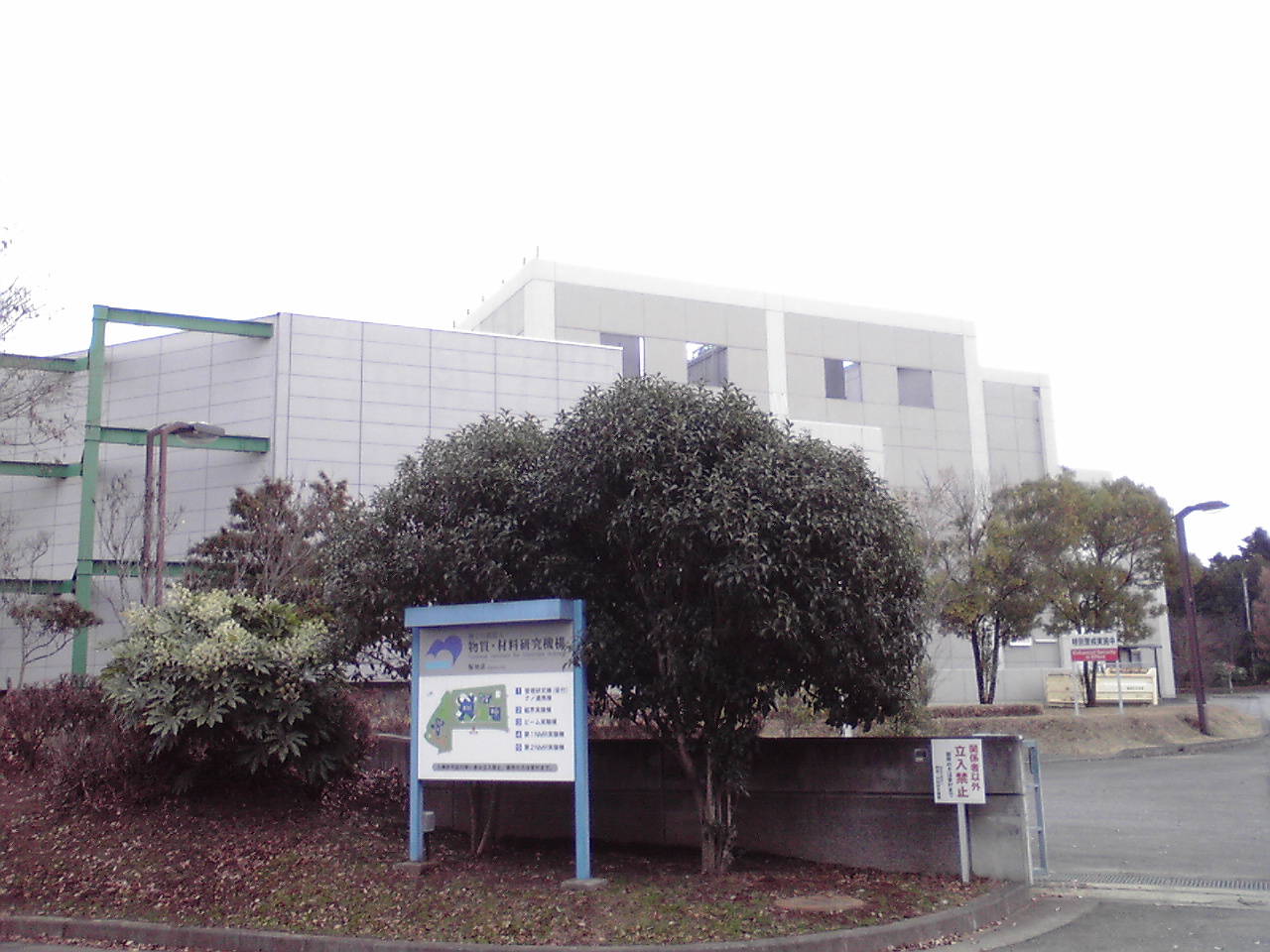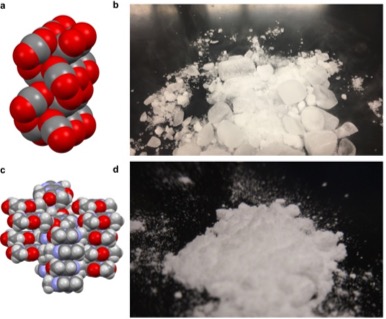|
Nanoarchitectonics
Nanoarchitectonics is a technology allowing to arrange nano-sized structural units, usually a group of atoms or molecules, in an intended configuration. It employs two major processes: nano-creation and nano-organization. Nano-organization involves re-arrangement of the structural units in a desired pattern, while nano-creation is synthesis of new materials that do not exist in nature. For example, by peeling atomic sheets off graphite slab, a novel nano-material graphene can be obtained, which has very different properties from graphite. Nanoarchitectonics is not limited to nano-creation and nano-organization, but rather employs those techniques to understand and use the ultimate functions of materials. The important technologies to achieve this goal involve manipulation of single atoms and molecules through physical interactions, chemical reactions, applied fields, or self-assembly. Examples A typical example of nano-organization is the development of a nanoelectronics circuit ... [...More Info...] [...Related Items...] OR: [Wikipedia] [Google] [Baidu] |
International Center For Materials Nanoarchitectonics
International Center for Materials Nanoarchitectonics (MANA from ''MAterials NanoArchitectonics'') is a special research unit established in 2007 at the National Institute for Materials Science (NIMS) within thWorld Premier International (WPI)Research Center Initiative by the Japan Society for the Promotion of Science (JSPS). Members MANA brings together outstanding researchers from Japan and other countries to conduct research at NIMS. The organizations providing foreign researchers are named "satellites" and currently include *University of Cambridge (UK) *University of California (US) *Georgia Institute of Technology (US) *CNRS (France) *University of Tsukuba (Japan) *Tokyo University of Science (Japan) and *Hokkaido University (Japan). MANadvisorsinclude Nobel Prize laureates Harold Kroto and Heinrich Rohrer, as well as other prominent scientists ( C. N. R. Rao, Galen D. Stucky, etc.) and industry leaders (L. Schlapbach, CEO of Empa). MANmembersinclude such recognized s ... [...More Info...] [...Related Items...] OR: [Wikipedia] [Google] [Baidu] |
Self-assembly
Self-assembly is a process in which a disordered system of pre-existing components forms an organized structure or pattern as a consequence of specific, local interactions among the components themselves, without external direction. When the constitutive components are molecules, the process is termed molecular self-assembly. Self-assembly can be classified as either static or dynamic. In ''static'' self-assembly, the ordered state forms as a system approaches equilibrium, reducing its free energy. However, in ''dynamic'' self-assembly, patterns of pre-existing components organized by specific local interactions are not commonly described as "self-assembled" by scientists in the associated disciplines. These structures are better described as "self-organized", although these terms are often used interchangeably. Self-assembly in chemistry and materials science Self-assembly in the classic sense can be defined as ''the spontaneous and reversible organization of molec ... [...More Info...] [...Related Items...] OR: [Wikipedia] [Google] [Baidu] |
Self-assembly
Self-assembly is a process in which a disordered system of pre-existing components forms an organized structure or pattern as a consequence of specific, local interactions among the components themselves, without external direction. When the constitutive components are molecules, the process is termed molecular self-assembly. Self-assembly can be classified as either static or dynamic. In ''static'' self-assembly, the ordered state forms as a system approaches equilibrium, reducing its free energy. However, in ''dynamic'' self-assembly, patterns of pre-existing components organized by specific local interactions are not commonly described as "self-assembled" by scientists in the associated disciplines. These structures are better described as "self-organized", although these terms are often used interchangeably. Self-assembly in chemistry and materials science Self-assembly in the classic sense can be defined as ''the spontaneous and reversible organization of molec ... [...More Info...] [...Related Items...] OR: [Wikipedia] [Google] [Baidu] |
Polymerization
In polymer chemistry, polymerization (American English), or polymerisation (British English), is a process of reacting monomer, monomer molecules together in a chemical reaction to form polymer chains or three-dimensional networks. There are many forms of polymerization and different systems exist to categorize them. In chemical compounds, polymerization can occur via a variety of reaction mechanisms that vary in complexity due to the functional groups present in the reactants and their inherent steric effects. In more straightforward polymerizations, alkenes form polymers through relatively simple free-radical reaction, radical reactions; in contrast, reactions involving substitution at a carbonyl group require more complex synthesis due to the way in which reactants polymerize. Alkanes can also be polymerized, but only with the help of strong acids. As alkenes can polymerize in somewhat straightforward radical reactions, they form useful compounds such as polyethylene and p ... [...More Info...] [...Related Items...] OR: [Wikipedia] [Google] [Baidu] |
National Institute For Materials Science
is an Independent Administrative Institution and one of the largest scientific research centers in Japan. History The growth and development of today's scientific research center has passed through several phases in a number of locations: In 1956, the National Research Institute for Metals (NRIM) was established in Meguro, Tokyo, Japan. In 1979, NRIM opened an office in Tsukuba. By 1995 the institute had moved most of its functions to that location. The Meguro campus continues to exist; it remains a part of the NRIM successor, the National Institute for Materials Science. In 1966, the National Institute for Research in Inorganic Materials (NIRIM) was established in Toshima, Tokyo, Japan. NIRIM was moved to Tsukuba in 1972, in the very early stages of the Tsukuba Science City. This event was considered as the first transfer of a national research institute in Japan. An independent administrative institute NIMS was established in Tsukuba by merging NRIM and NIRIM in 2001. Ca ... [...More Info...] [...Related Items...] OR: [Wikipedia] [Google] [Baidu] |
Freie Universität Berlin
The Free University of Berlin (, often abbreviated as FU Berlin or simply FU) is a public research university in Berlin, Germany. It is consistently ranked among Germany's best universities, with particular strengths in political science and the humanities. It is recognised as a leading university in international university rankings. The Free University of Berlin was founded in West Berlin in 1948 with American support during the early Cold War period as a Western continuation of the Friedrich Wilhelm University, or the University of Berlin, whose traditions and faculty members it retained. The Friedrich Wilhelm University (which was renamed the Humboldt University), being in East Berlin, faced strong communist repression; the Free University's name referred to West Berlin's status as part of the Western Free World, in contrast to communist-controlled East Berlin. In 2008, as part of a joint effort, the Free University of Berlin, along with the Hertie School of Governance, a ... [...More Info...] [...Related Items...] OR: [Wikipedia] [Google] [Baidu] |
Tsukuba
is a city located in Ibaraki Prefecture, Japan. , the city had an estimated population of 244,528 in 108,669 households and a population density of 862 persons per km². The percentage of the population aged over 65 was 20.3%. The total area of the city is . It is known as the location of the , a planned science park developed in the 1960s. Geography Tsukuba is located in southern Ibaraki Prefecture, approximately 50 kilometers from central Tokyo and about 40 kilometers from Narita International Airport. Mount Tsukuba, from which the city takes its name is located in the northern part of the city. Except for the area around Mount Tsukuba, the city is a part of the Kantō Plain with an altitude of 20 to 30 meters. Mountains: Mount Tsukuba, Mount Hokyo. Rivers: Kokai River, Sakura River, Higashiyata River, Nishiyata River, Ono River, Hanamuro River, Inari River. Parks: The city has more of 100 parks and green areas to relax. Different parks are connected by pedestrian w ... [...More Info...] [...Related Items...] OR: [Wikipedia] [Google] [Baidu] |
University Of California, Los Angeles
The University of California, Los Angeles (UCLA) is a public land-grant research university in Los Angeles, California. UCLA's academic roots were established in 1881 as a teachers college then known as the southern branch of the California State Normal School (now San José State University). This school was absorbed with the official founding of UCLA as the Southern Branch of the University of California in 1919, making it the second-oldest of the 10-campus University of California system (after UC Berkeley). UCLA offers 337 undergraduate and graduate degree programs in a wide range of disciplines, enrolling about 31,600 undergraduate and 14,300 graduate and professional students. UCLA received 174,914 undergraduate applications for Fall 2022, including transfers, making the school the most applied-to university in the United States. The university is organized into the College of Letters and Science and 12 professional schools. Six of the schools offer undergraduate degre ... [...More Info...] [...Related Items...] OR: [Wikipedia] [Google] [Baidu] |
Snow
Snow comprises individual ice crystals that grow while suspended in the atmosphere—usually within clouds—and then fall, accumulating on the ground where they undergo further changes. It consists of frozen crystalline water throughout its life cycle, starting when, under suitable conditions, the ice crystals form in the atmosphere, increase to millimeter size, precipitate and accumulate on surfaces, then metamorphose in place, and ultimately melt, slide or sublimate away. Snowstorms organize and develop by feeding on sources of atmospheric moisture and cold air. Snowflakes nucleate around particles in the atmosphere by attracting supercooled water droplets, which freeze in hexagonal-shaped crystals. Snowflakes take on a variety of shapes, basic among these are platelets, needles, columns and rime. As snow accumulates into a snowpack, it may blow into drifts. Over time, accumulated snow metamorphoses, by sintering, sublimation and freeze-thaw. Where the climate is co ... [...More Info...] [...Related Items...] OR: [Wikipedia] [Google] [Baidu] |
Molecular Crystal
A molecular solid is a solid consisting of discrete molecules. The cohesive forces that bind the molecules together are van der Waals forces, Dipole-Dipole Forces, dipole-dipole interactions, Quadrupole, quadrupole interactions, Pi interaction, π-π interactions, hydrogen bonding, halogen bonding, London dispersion forces, and in some molecular solids, Coulomb's law, coulombic interactions. Van der Waals, dipole interactions, quadrupole interactions, π-π interactions, hydrogen bonding, and halogen bonding (2-127 Joule, kJ Mole (unit), mol−1) are typically much weaker than the forces holding together other solids: metallic (metallic bonding, 400-500 kJ mol−1), Ionic compound, ionic (Coulomb's law, Coulomb’s forces, 700-900 kJ mol−1), and Network covalent bonding, network solids (covalent bonds, 150-900 kJ mol−1). Intermolecular interactions, typically do not involve delocalized electrons, unlike metallic and certain covalent bonds. Exceptions are charge-transfer complex ... [...More Info...] [...Related Items...] OR: [Wikipedia] [Google] [Baidu] |
Van Der Waals Forces
In molecular physics, the van der Waals force is a distance-dependent interaction between atoms or molecules. Unlike ionic bond, ionic or covalent bonds, these attractions do not result from a Chemical bond, chemical electronic bond; they are comparatively weak and therefore more susceptible to disturbance. The van der Waals force quickly vanishes at longer distances between interacting molecules. Named after Dutch physicist Johannes Diderik van der Waals, the van der Waals force plays a fundamental role in fields as diverse as supramolecular chemistry, structural biology, polymer science, nanotechnology, surface science, and condensed matter physics. It also underlies many properties of Organic chemistry, organic compounds and molecular solids, including their solubility in Chemical polarity, polar and non-polar media. If no other force is present, the distance between atoms at which the force becomes repulsive rather than attractive as the atoms approach one another is called ... [...More Info...] [...Related Items...] OR: [Wikipedia] [Google] [Baidu] |








